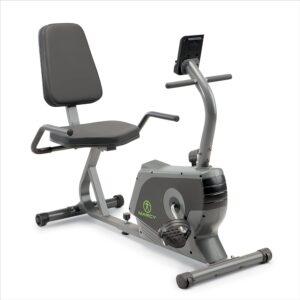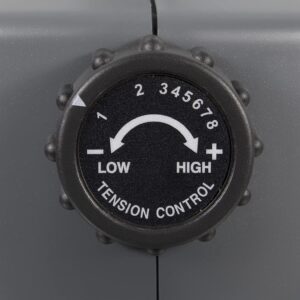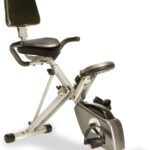Exercise bikes can be described as stationary bikes that provide a great opportunity to burn calories at the convenience of your home. You can also spot them in different commercial gyms and rely on them for low-impact workouts. However, exercise bikes are more popular due to their effective cardio solution at home or in the garage. When it comes to resistance, exercise bikes use magnetic resistance. As a result, users are able to customize their workout.
But what if, one day, out of the blue, the resistance stops functioning? One must know how to tackle the situation, or otherwise, the exercise bike may not be able to function at all. So, if you want to save the hefty amount you paid to purchase the exercise bike, learn to fix its magnetic resistance, too. We have explained in the guided steps that you need to take to fix your exercise bike and get back to working as quickly as possible.
How to Fix Magnetic Resistance on Exercise Bike:
1. Ensure the Connection:
Some exercise bikes rely on electricity to provide a magnetic resistance control mechanism. Make sure that your exercise bike is properly connected to its power source. Check and see if the exercise bike’s power cord is securely plugged and the outlet is properly functioning.
2. Inspect the Surroundings:
Check in the surrounding area to see if there are any obstructions that may be a cause behind the problem. For instance, it can be dirt, debris, or other sort of obstruction that might be interfering with the operation of your exercise bike. Hence, you should keep a close eye on any obstruction by taking care of hygiene regularly. The presence of debris and dirt may affect the magnet’s proximity to the exercise bike’s flywheel. As a result, the resistance levels may end up getting impacted.
3. Adjust the Flywheel and Magnet:
In order to function effectively, it is important for the magnets of your exercise bike’s resistance mechanism to be aligned properly with its flywheel. If they are not aligned well, the resistance level can be affected. Therefore, one must ensure the alignment of the magnets with the flywheel.
In addition, you can also get help from the manufacturer’s instructions in order to learn the right way of adjusting them. It may require you to tighten or loosen the screws a little, follow certain adjustment procedures, or use an Allen wrench, etc.
4. Resetting the Console:
A lot of exercise bikes feature a console or display for controlling the levels of resistance. You can try resetting the console, which may result in fixing the magnetic resistance on the exercise bike. To reset the settings, you can unplug the exercise bike from its power source and then wait for a few minutes. After that, plug it back in and see whether the issue got resolved or not.
5. Resistance Control Settings:
In case your exercise bike comes with adjustable resistance levels, try checking if the settings are adjusted properly as per your preferences. To learn further, refer to the user’s manual and learn to adjust the resistance levels of the exercise bike.
For a Stationary Bike:

· Remove the Flywheel Covers and Pedal Cranks:
In the case of an upright exercise bike, you can also try pulling its cover from the side and reaching the flywheel. After that, hold it still, then try rotating the pedals anti-clockwise. As a result, they come off its internal pulley mechanism. After setting them aside, remove the flywheel covers completely.
· Remove the V-Belt:
With the help of a ratchet and socket, remove a certain nut that connects to the bike’s pulley. Then, try moving the pulley to the side and slipping off the V-belt. Check the V-belt thoroughly to see if it has been damaged and get it replaced if needed.
· Removing the Magnetic Unit:
After removing the belt, reach out for the magnetic unit. First, remove the nuts holding it in place, and then lift it out of your exercise bike. Replacing the magnetic unit with a new one may help the bike start to work again.
· Put them Back Together:
Now, put the v belt, flywheels, and pedals back together onto your bike to get it all sealed up after making sure that everything is secure by testing the functioning of magnetic resistance.
Read: Are Exercise Bikes Worth It?
For a Recumbent Bike:
· Find the Battery Pack:
As for most recumbent bikes, they run on batteries. Remove the chain gain on the side of your bike to locate its hub sensor. It can also be loosened with the help of a screwdriver, after which you can lift it off. Lastly, keep rotating the flywheel until the battery pack is accessible.
· The Battery Pack:
Replace the batteries and see if there is any loose connection. In case of any loose wires, try either replacing or repairing them. Finally, reattach them to your exercise bike.
· The Speed Sensor:
In case the above-mentioned method doesn’t work out, check the speed sensor. Recumbent bikes feature speed sensors located close to the pedals. Locate the battery cap after removing the connecting nuts. Then, install a new battery after removing the covers. Put back the sensor unit on your bike and reattach the chain guard.
· Check the Exercise Bike:
After fixing your bike’s batteries and wires, its magnetic resistance should be good. Now check the bike and see if it’s working fine.
For a Spin Bike:
The steps to fix your magnetic bike’s resistance are the same as those for an upright exercise bike. The resistance level offered by the spin bikes is usually much higher as they are manufactured for intense exercise. After following the suggested steps, check out the manufacturer’s guide to see if there are any special instructions mentioned.
Conclusion:
We hope that after following the guide, you are able to fix the magnetic resistance of your exercise bike. In case you still face the issues, it’s better to ask for professional assistance. Contact the certified technician, the manufacturer, or a trustworthy fitness equipment repair service to have your exercise bike checked. Best of luck!




